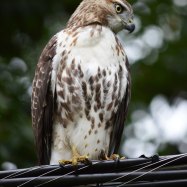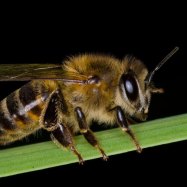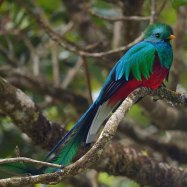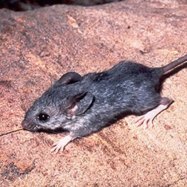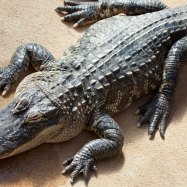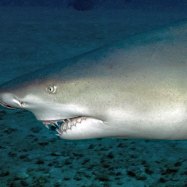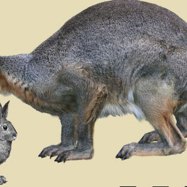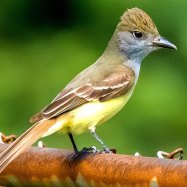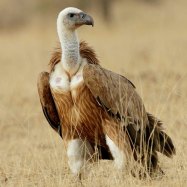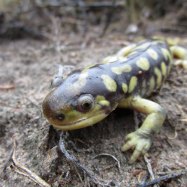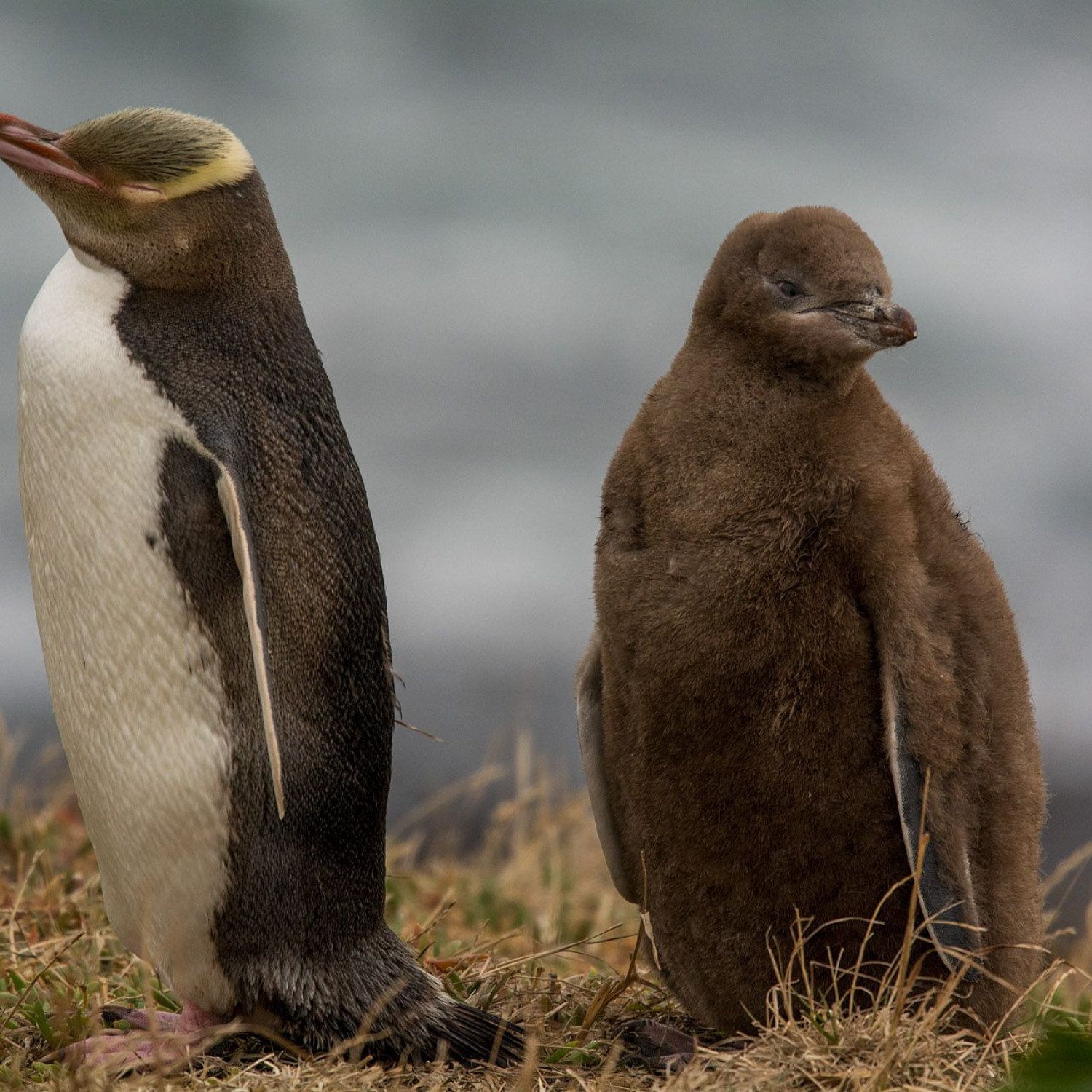
Yellow Eyed Penguin
65-79 cm
The Yellow-eyed Penguin, found on the coastline of New Zealand, is a stunning sight with its slender, torpedo-shaped body. Known as the rarest penguin in the world, this endangered species belongs to the Spheniscidae family and can grow up to 65-79 cm. Its distinct yellow eyes make it stand out, making it a must-see for any wildlife enthusiast. #yelloweyedpenguin #NZcoastline #endangeredspecies
Animal Details Summary:
Common Name: Yellow Eyed Penguin
Kingdom: Animalia
Habitat: Coastal areas
The Enigmatic Yellow Eyed Penguin - A Unique Species of New Zealand
New Zealand, an island country located in the southwestern Pacific Ocean, is known for its diverse and unique wildlife. From the iconic kiwi bird to the elusive tuatara, New Zealand is home to a variety of fascinating animals. However, there is one bird that stands out among the rest - the Yellow Eyed Penguin.Also known as Megadyptes antipodes, the Yellow Eyed Penguin is a rare and enigmatic species that inhabits the coastlines of New Zealand Yellow Eyed Penguin. Considered one of the rarest penguin species in the world, it has captivated the hearts of many with its striking appearance, fascinating behaviors, and critical role in the ecosystem. In this article, we will take a closer look at this unique animal and uncover some of its most intriguing features.
Distinct Physical Characteristics
The Yellow Eyed Penguin is a medium-sized penguin, standing at an average height of 65-79 cm. With a slender and torpedo-shaped body, it differs from its other penguin counterparts. Its most prominent feature is, of course, its vibrant yellow eye, which gives it its name. This eye color is a result of a bright yellow ring that forms around its iris, creating a striking contrast against its black and white plumage.Unlike other penguin species, the Yellow Eyed Penguin has a distinctive feather pattern. It has a yellow band of feathers stretching from its beak to the back of its head, giving it a unique and eye-catching appearance. This band also separates the bird's snowy white chest from the rest of its body, further adding to its striking look Yellow Aphids.
A Secluded Habitat
Found only along the coastlines of New Zealand, the Yellow Eyed Penguin prefers to live in remote and secluded areas, away from the hustle and bustle of human activity. These birds are most commonly found on the eastern and southern coasts of New Zealand's South Island, as well as the eastern coast of its North Island.Their preferred habitats are coastal forests, beaches, and rocky shorelines where they can find shelter and protection from predators. These areas also provide an ideal environment for the Yellow Eyed Penguin to hunt for food, as they are skilled swimmers and divers.
Nutrient-Rich Diet
Despite their distinct physical features, the Yellow Eyed Penguin's primary source of sustenance is similar to other penguin species - fish, squid, and krill. However, what sets them apart is the type of fish they consume. Studies have shown that the Yellow Eyed Penguin feeds mostly on fish from the genus "Opisthoproctus," which is a deep-sea species found in the oceanic waters off New Zealand's coast. This diet provides the penguin with essential nutrients and contributes to its unique flavor and smell, making it one of the most sought-after prey for predators.Threats to the Species
Unfortunately, the Yellow Eyed Penguin population is facing several threats that have resulted in a decline of their numbers. Habitat degradation, pollution, and disturbance caused by humans are some of the primary threats these birds face. As they are highly sensitive to human activities, any disturbances, such as noise from boats or human settlements near their habitats, can cause them to abandon their nests.Additionally, these penguins are also at risk from predators such as feral cats, dogs, and stoats. Their secluded habitats make them vulnerable to these predators, and human disturbance can further increase their risk.
Conservation Efforts
Fortunately, several organizations and conservation efforts are working towards the protection and preservation of the Yellow Eyed Penguin. The New Zealand Department of Conservation has implemented measures such as predator control, habitat restoration, and breeding programs to increase the penguin population. They have also launched an awareness campaign to educate the public about the importance of preserving these unique birds and their habitats.The Unique Role in the Ecosystem
Aside from their striking appearance and important cultural significance for the Maori people of New Zealand, the Yellow Eyed Penguin also plays a crucial role in the ecosystem. As efficient predators, they help maintain the balance of fish populations in the ocean, ensuring a healthy marine ecosystem. Furthermore, the penguin's guano, or droppings, provides essential nutrients for plant growth, making them important contributors to the coastal ecosystems.Final Thoughts
The Yellow Eyed Penguin, with its distinctive appearance and crucial ecological role, is undoubtedly a fascinating species. However, its rare and elusive nature makes it challenging to study and help conserve. As conservation efforts continue, it is crucial for us to remember the importance of preserving and protecting this unique animal species. By working together, we can ensure that the Yellow Eyed Penguin continues to thrive and enrich the biodiversity of the beautiful country of New Zealand.

Yellow Eyed Penguin
Animal Details Yellow Eyed Penguin - Scientific Name: Megadyptes antipodes
- Category: Animals Y
- Scientific Name: Megadyptes antipodes
- Common Name: Yellow Eyed Penguin
- Kingdom: Animalia
- Phylum: Chordata
- Class: Aves
- Order: Sphenisciformes
- Family: Spheniscidae
- Habitat: Coastal areas
- Feeding Method: Carnivore
- Geographical Distribution: New Zealand
- Country of Origin: New Zealand
- Location: Coastline of New Zealand
- Animal Coloration: Yellow and black
- Body Shape: Slender, torpedo-shaped body
- Length: 65-79 cm
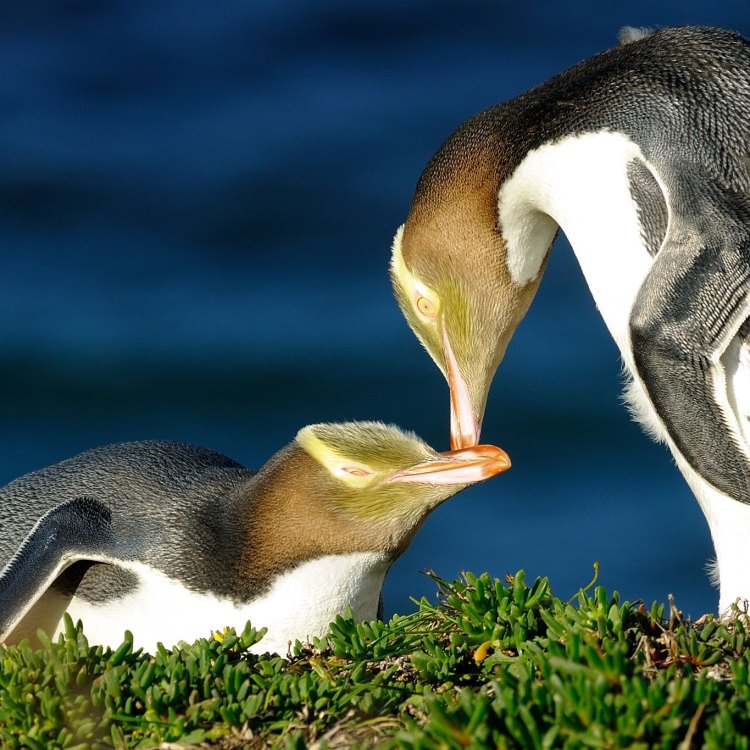
Yellow Eyed Penguin
- Adult Size: Medium
- Average Lifespan: 9-12 years
- Reproduction: Sexual
- Reproductive Behavior: Monogamous
- Sound or Call: Loud, braying call
- Migration Pattern: Resident
- Social Groups: Colonial
- Behavior: Diurnal
- Threats: Habitat loss, predation, fishing nets, climate change
- Conservation Status: Endangered
- Impact on Ecosystem: Ecosystem indicator species
- Human Use: Tourism, research
- Distinctive Features: Yellow eye-stripe, yellow head, pale yellow feathers on the sides
- Interesting Facts: One of the rarest penguin species in the world
- Predator: Sea lions, fur seals, sharks
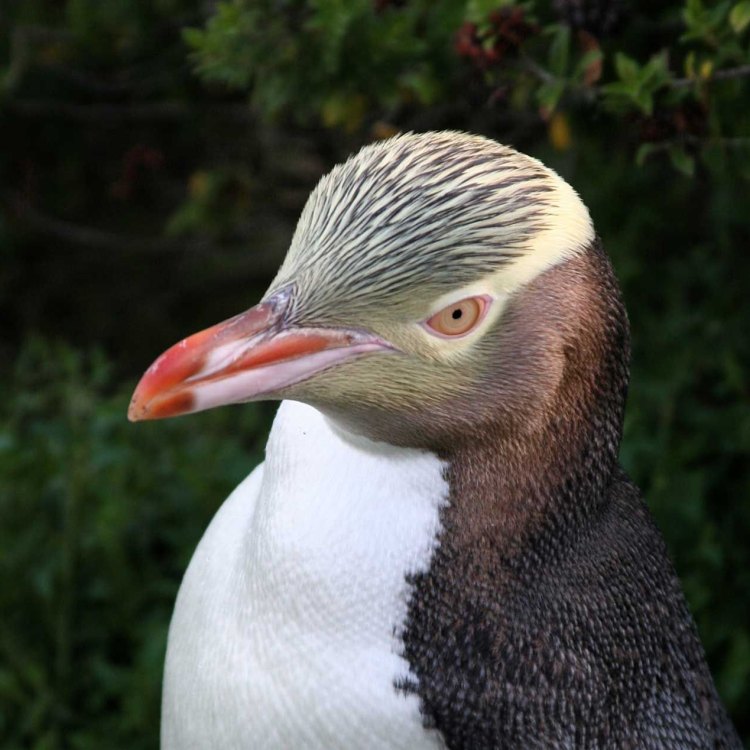
Megadyptes antipodes
The Threatened Beauty of the Yellow Eyed Penguin
Amidst the cold, rocky shores of New Zealand, there is a species of penguin that stands out from the rest – the Yellow Eyed Penguin. With its striking markings and unique features, the Yellow Eyed Penguin has captured the hearts of many, but unfortunately, its population is rapidly dwindling, making it one of the rarest penguin species in the world. In this article, we will explore the fascinating characteristics of this endangered bird and the factors that threaten its survival.The Yellow Eyed Penguin, or Megadyptes antipodes, is a medium-sized penguin, reaching an average adult size of 60-65 cm and weighing around 5-6 kg PeaceOfAnimals.Com. They have a distinct appearance, with a yellow eye-stripe, a bright yellow head, and pale yellow feathers on the sides, giving them a unique and beautiful look.
But what makes this penguin truly special is its reproductive behavior. Unlike most penguins, which often mate for the breeding season and then separate, Yellow Eyed Penguins are monogamous and form long-term pair bonds. They are known to be devoted and faithful to their chosen partner, only separating if one of them dies. This unique behavior adds to the allure of this already enchanting sea bird.
Yellow Eyed Penguins are also known for their loud and braying call, which can be heard from quite a distance. Their call is not only used for communication with their mate but also for territorial defense and establishing their space within colonies.
Speaking of colonies, Yellow Eyed Penguins are social birds and live in groups called "colonies." These colonies can range in size from a few pairs to more than 50 pairs Yellowtail Snapper. They are diurnal, meaning they are most active during the day, spending their time swimming, hunting, and caring for their chicks.
Unfortunately, the Yellow Eyed Penguin's existence is under great threat due to various factors. Habitat loss, mainly caused by human activities, is a major threat to these birds. Human development, pollution, and climate change have all played a role in destroying their natural homes and food sources, making it difficult for them to survive.
Predation is another significant threat to the Yellow Eyed Penguin's survival. Sea lions, fur seals, and sharks are their natural predators, but they also face the threat of introduced predators like cats, dogs, and rats, which prey on their eggs and chicks.
Human activities, specifically fishing, have also impacted the Yellow Eyed Penguin population. These penguins often get caught in fishing nets, resulting in injuries, drowning, or death. This is a widespread occurrence in New Zealand, where commercial fishing is prevalent.
Unfortunately, all these threats have had a severe impact on the Yellow Eyed Penguin population, and they are now classified as an endangered species. According to the International Union for Conservation of Nature (IUCN), only about 4,000 breeding pairs remain in the wild, making them one of the rarest penguin species in the world.
The decline of the Yellow Eyed Penguin population has a significant impact on the ecosystem. They are considered an "ecosystem indicator species," meaning their presence or absence can indicate the health of the ecosystem they reside in. As their population continues to decrease, it is a clear sign that something is wrong, and urgent action needs to be taken to protect not just these penguins but the entire ecosystem.
So, what is being done to protect the Yellow Eyed Penguin? The New Zealand government has implemented several regulations to help protect their habitats, including managing coastal development, restricting fishing, and controlling human activity in their breeding grounds. Along with governmental efforts, various conservation organizations and research teams are also working to protect this endangered species.
The importance of the Yellow Eyed Penguin extends beyond its ecological role; it also has a significant impact on the local communities. With its unique and charming characteristics, it has become a popular tourist attraction. People from all over the world visit New Zealand to catch a glimpse of these beautiful penguins in their natural habitat. This has also led to a boom in eco-tourism, bringing economic benefits to local communities.
Research on the Yellow Eyed Penguin has also provided valuable insights into their behavior, habitat, and migration patterns. Scientists continue to study these birds to understand their needs better and find ways to ensure their survival.
In conclusion, the Yellow Eyed Penguin may be one of the rarest penguin species in the world, but it is also one of the most endearing and unique. Its striking appearance and charming behaviors have captivated many, but unfortunately, its numbers are declining due to various threats. It is our responsibility to take action and protect these beautiful birds, not just for their sake but for the health of our entire ecosystem. Let us be a voice for the Yellow Eyed Penguin and ensure that this threatened species continues to grace our shores for generations to come.
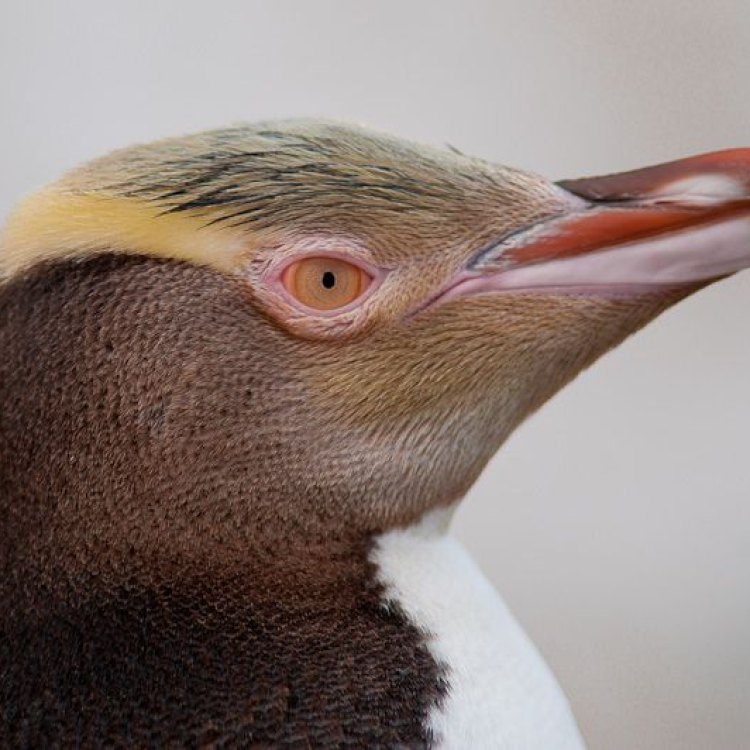
The Enigmatic Yellow Eyed Penguin - A Unique Species of New Zealand
Disclaimer: The content provided is for informational purposes only. We cannot guarantee the accuracy of the information on this page 100%. All information provided here may change without prior notice.

